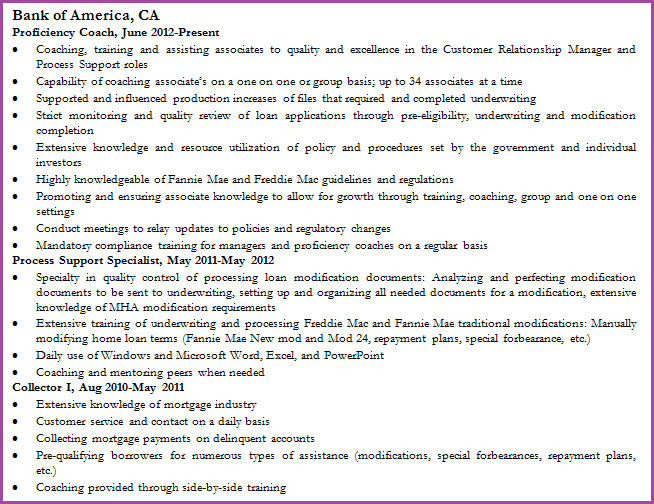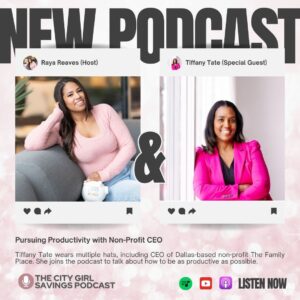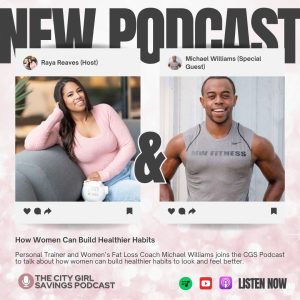Whether you are job hunting or stable in your current position, an up-to-date and fully formatted resume is important to have. You never know what can happen. You may be referred for a promotion with your current employer, or someone from another company may request your resume.
No matter what the situation is, a financially savvy lady always has an updated resume handy and ready to go.
Today’s topic is going to cover building the perfect resume (affiliate link). The CGS Team will break down the sections that should be included on your resume, as well as provide you with some standard Do’s and Don’ts of resume writing. Get your resumes out and make it a perfect representation of your skills.
Building the perfect resume…
Choosing your resume format
In preparation for updating your resume, you should decide the type of resume you want to write. There are 3 standard resume formats: Chronological, Functional and Combination.
A Chronological resume lists your work experience in chronological order, starting with your current role and ending with your first work experience (or up to 15 years, depending on how long you have been in the work world).
A Functional resume calls out your major, relevant work skills in detail, while your work history is listed without additional details.
A Combination resume is a combination of Chronological and Functional resumes. It will list your work experience in chronological order, as well as call out your relevant skills within your role.
The most commonly preferred resume template by HR and employers is Chronological, so for the sake of this article, the CGS Team will be discussing sections based on a chronologically-formatted resume.
Heading
As the name suggests, the “heading” of your resume will be at the top of the page and should include your name and contact information. More specifically, your heading should include your name in a large and easy to read font, your phone number, email address and website/social media links.
Keep in mind that your website and social media links should be job search appropriate. If they are not, then leave them out! If your resume is more than one page, ensure that your heading is on each subsequent page as well.
Objective
Your objective statement should clearly indicate what you are looking to achieve in your next job. If you are applying for jobs in the same field, it is acceptable to keep the objective the same.
If you are applying for different kinds of jobs, ensure your objective matches appropriately with the job you are submitting for. Keep in mind that your objective statement should be as brief as possible and include the job you desire and the responsibility you want.
Resume writing blog Susan Ireland provides a great overview of what to include:
- The area of work (“Marketing,” “Sales”).
- The title, if you know it (“Manager,” “Sales Representative”), or responsibility level.
- Areas of specialization (“with an emphasis on new business development,” “focusing on graphic design”). This should be used only if a simple objective statement needs to be more clearly defined.
Qualifications
One important thing to keep in mind when writing the qualifications section of your resume is to include qualifications that apply to the job you are seeking. It is not necessary to indicate irrelevant or unnecessary qualifications.
Also, leaving out unnecessary qualifications will help free up space for the rest of the information. Your qualifications should list the 3 most important qualifications for the job, with 2-3 sentences elaborating on your experience.
Indicating job growth as a result of your previous responsibilities is great to include in your qualification summary. If you are unsure which qualifications to list, do some research on the specific job you are seeking.
Check out some requirements for that job and see if your qualifications or previous work responsibilities match. This will be a great starting point for including what is most important.
Work Experience
When listing your work experience, write out the list of previous job roles starting with the most recent and working your way to the least recent. Depending on how long you have been in the workforce, it is usually not necessary to include work history longer than 15 years ago.
Each position should include the start and end dates, job title, employer, city and state of your employment. Under this information, include a bullet point list of job related responsibilities, achievements and other relevant information.
If you have experience with one company with multiple positions, then you can list your company name with all remaining information underneath. Here is an example of this type of formatting:

Achievements
The achievements listed on your resume should not be job descriptions! The achievements should indicate the professional (and personal, if job related) goals that you have achieved.
Make your achievements stand out. Potential employers like to see what you have contributed in the past and how you have drove results for previous employers. This is the type of information that should be included:
- Successful projects that you are proud of
- Quantifiable result descriptions (“Increased profits by 17% through direct marketing”)
- Positive effects on the company as a result of your work
- Risks or problems that were identified and alleviated under your watch
- Awards received personally and professionally
Remember to keep it relevant to the position you are looking for. Leave off anything that may be random or unrelated.
Education
The education section of your resume should contain information related to your degree or coursework. Include the specific name and type of degree, name of the institution it was received from and the dates of your education.
This applies to college degrees, high school diplomas or G.E.D.s. Certificates, licensing and additional training may also be listed, all including the same information.
Other Skills and Strengths
The skills and strengths section should include any other applicable interests, skills, professional affiliations, and volunteer work not already indicated. This would be a good place to include computer and software strengths.
Include personal accomplishments and non-work experience in this section. Don’t go overboard with this section. Keep it limited to items that truly mean something to you.
Related: 6 Common Resume Mistakes Women Make
What did you think of the resume-building tips provided? Does your resume include some or all of the items listed? Are there any additional sections you think may be useful on a resume? Share your thoughts and questions with the community by leaving a comment below!






2 thoughts on “Finance 101: Building the Perfect Resume”
I’m stable in my job, but having a current resume leaves me ready for anything! Thanks CGS!
I think it helps people to Include more concrete numbers or tools used when describing their experience on the job. Having quantifiable results is great in the achievements section once you have more industry experience, but when you are starting off it makes your resume much stronger.